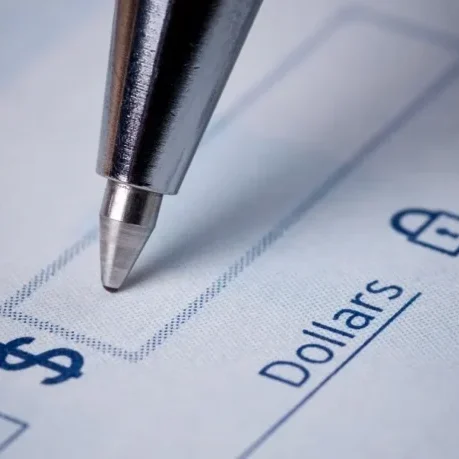How to Finance a Small Business Acquisition
Summary: Financing a business acquisition can be challenging for small business buyers. This article discusses the five most common ways to finance a small business acquisition.
We also explain how transactions are structured, how the down payment works, and how to get operational financing. The article covers the following:
- How much money do you need to buy a business?
- How to finance a small business acquisition
- The down payment
- Leveraged buyouts for small businesses
- Are "no-money-down" opportunities a real option?
- How to finance operations
- When to look for financing
- Transaction structure examples
1. How much money do you need to buy a business?
The amount of money you need to buy an existing business depends on how you structure the purchase and the value of the company you are buying. If the transaction does not use any financing, then you pay for the acquisition directly. The funds need to come from you and your partners.
Transactions to buy a small business in cash are rare, especially in transactions that exceed a few hundred thousand dollars. Instead, most of these transactions use financing to cover a portion of the cost. The financing allows you to acquire a company without paying for the total amount out of your own funds.
When you use financing, you directly pay only a small part of the total cost. The financing company covers the rest of the acquisition cost. In these cases, you need enough money to cover only your part of the transaction. This amount can be as low as 10% of the total project cost. This strategy is commonly referred to as "using leverage."
Small business buyers use financing for one or more of the following reasons. They:
- Can't afford to pay for the whole business
- Hope for the increased returns that leverage can provide
- Want to buy a large business
2. How to finance a small business acquisition
Entrepreneurs looking to buy a small company have several options that they can use to finance their acquisition. Here are the most common options. Keep in mind that most acquisitions use more than one financing option.
a) Seller financing
Most business acquisitions have a financing component provided by the seller. Basically, the seller provides you with a loan that is amortized over a period of time. You pay the loan back like any other loan, usually from the proceeds of the business.
Buyers typically negotiate seller financing for three reasons. The most important reason is that it helps ensure the seller complies with their post-closing commitments (e.g., buyer training). The buyer's ability to repay the seller is tied to the performance of the business. Consequently, the seller has an incentive to perform.
Additionally, some lenders demand the seller provide financing to the buyer and make their loans contingent on this provision. This situation leaves the seller little choice. They must offer financing if they want to close the sale.
Lastly, using seller financing also reduces the buyer's reliance on lender financing. Sellers can be more flexible than lenders and provide you with convenient terms.
From the seller's perspective, things are a bit different. Sellers prefer to get paid immediately and not offer financing. However, unless the business is very popular, sellers have to offer financing as an incentive to buyers.
On average, most sellers are willing to finance between 5% and 20% of the business acquisition. This amount varies substantially by transaction.
b) SBA-backed loan
In our experience, one of the best options to finance a small business purchase is to use a Small Business Administration (SBA)-backed loan, commonly called an "SBA loan."
Actually, the SBA itself does not lend money. The SBA provides guarantees and safety measures for lenders who, in turn, can lend money to fund acquisitions. SBA-backed loans usually have competitive rates and terms.
SBA-backed loans cannot be used to finance 100% of an acquisition. Usually, they can finance up to 90% of the transaction, though they can sometimes finance as much as 95%. The rest of the funds must come directly from the buyer.
The SBA sets some minimum qualification guidelines. However, lenders can add to those guidelines as they see fit. Borrowers using a 7(a) loan can get up to $5,000,000 to cover most (or part) of the purchase of the business. To qualify, potential borrowers must:
- Have a minimum credit score of 650 to 680
- Be able to put 10% down
- Provide personal financial information
- Provide three years of tax information
- Show they have ample experience in the purchase target's industry
Get more information on how to get a business acquisition loan and its qualification requirements.
c) Bank loan
Buyers who cannot use an SBA-backed loan can consider a conventional loan. However, these loans have more stringent qualification requirements and are harder to get. These loans usually require substantial assets that can be used as collateral. They also require excellent credit, management experience, and a very solid business.
d) Assumption of debt
Buyers can also finance part of a business acquisition by assuming some of the company's existing liabilities. These can include liabilities like loans and trade payables. How you assume a company's debt depends on how you structure the sale. Also, some types of debt require the lender's approval before they can be transferred/assumed. Assuming business debt can be complex and have tax consequences.
e) Investors and private offices
Finding an investor or a family office to participate in an acquisition is difficult. Buyers can connect with them through acquaintances and specialized networking events. Investors and family offices can be very flexible and handle acquisitions that don't conform to conventional lending standards. These investors are also very selective in who they work with. They play a similar role as a private equity firm would but for smaller opportunities.
3. The down payment
Most small business acquisitions require that the buyers contribute a down payment as part of the purchase. This down payment is commonly referred to as the "equity injection." SBA-backed and conventional lenders require an equity injection as a condition of financing a transaction.
The equity injection cannot be financed or come from the seller. It must come from the buyer's resources, such as savings, investments, and so on. Learn more about equity injection sources.
Usually, the equity injection has to be a minimum of 10% of the project cost. Some transactions may require a higher equity injection depending on their risk.
In very limited cases, some SBA-backed transactions can be done using a 5% equity injection. These transactions also require the seller to finance part of the acquisition and take a standstill on their loan. In our experience, few sellers are willing to agree to a standstill.
4. Leveraged buyout
Most of the acquisitions that we see qualify as small business leveraged buyouts. In these instances, the buyers look to maximize the amount of financing they use while limiting their equity injection to around 10%.
In principle, the transaction structure can be relatively simple. You leverage some of the business's assets, such as equipment, real estate, or inventory, to help finance the acquisition. In small companies, leveraged buyouts usually involve the combination of seller financing and a bank or SBA loan.
In most cases, buyers use this structure simply because they use all their available funds to buy the largest business that meets their criteria. Leveraged buyouts have advantages and disadvantages which should be considered before using one.
The main disadvantage is that the business is fully leveraged and has a high debt load. This debt gives owners little room to maneuver if they run into problems.
5. Are "no-money-down" opportunities realistic?
Many buyers assume that every leveraged buyout requires no equity injection from the buyer. This assumption is incorrect. The misunderstanding is based on how transactions are described in the popular media. Most LBOs require an equity injection. However, in very large transactions, the equity injection comes from the private equity firm rather than the management team.
Small business leveraged buyouts do not use private equity due to their size. Consequently, the equity injection component must come from the individual buyers.
In principle, you can acquire a business for "no money down" if the seller offers 100% financing or if you find a private investor willing to buy a business and let you run it. Both of these scenarios are unlikely, at least in our experience.
For example, let's look at a situation where a seller offers 100% financing. What incentive does a seller have to sell their business with 100% financing? Most sellers want to get paid quickly and prefer not to deal with the hassle of offering to finance the sale. Buyers should be very careful when exploring these opportunities since they could end up buying a troubled business.
6. How to finance operations
So far, we have described how to buy a company. However, that is only half the battle. You still need funds to operate the business successfully once you acquire it. However, most buyers use all their disposable funds to acquire the business and have no additional funds. This lack of funds could create a serious problem for the business.
Most acquisitions also need additional funding to cover the initial operations. It's best to negotiate this financing package when you are negotiating the purchase. Trying to get funding after purchasing a business is difficult since the company's assets are already encumbered by the acquisition loans.
There are three ways to finance operations:
a) Cash reserve/self-funding
Ideally, the best way to finance operations is to use a cash reserve. This reserve can be initially funded by your own money. This seldom happens since buyers exhaust their resources by simply acquiring the business.
b) Loan
The most common way to finance operations is by using a loan. Usually, this loan is provided by the same lender that finances the acquisition. Using a single lender makes things easier for the buyer since they will not have to deal with inter-creditor agreements between the lenders.
Plan your cash flow needs for the next few years carefully. Getting additional funding after an acquisition, even if your company is doing well, is very difficult.
c) Invoice factoring
Companies that sell products/services to commercial and government clients usually encounter cash flow problems because clients pay their invoices on net-30- to net-60-day terms. This problem can be solved by using invoice factoring. By financing slow-paying invoices, factoring provides immediate funds to run the business.
7. When to look for financing
Most buyers make the mistake of looking for financing too early in the process. They contact lenders before they have a transaction in the hopes that they can get pre-qualified for an acquisition.
However, lenders base their offers and approvals specifically on the business, the offer's terms, and other items. Without a specific transaction, there is little that a lender can do for you.
The best time to speak with lenders is right before you submit a Letter of Intent (LOI). Buyers are usually concerned about this timing since they don't want to make an offer without first having a pre-qualification. This situation looks like a classic catch-22. Fortunately, there is a way out.
A well-written LOI should have a clause that makes the transaction contingent on obtaining financing. It's best to craft the LOI with the help of an attorney who has experience with acquisitions. This approach ensures that you have adequate protection.
8. Deal structure examples
There are several ways to structure an acquisition. In this section, we show a few examples of transactions of different sizes and structures.
a) $1,000,000 acquisition with no seller financing
This example shows a simple transaction in which an individual buys a $1,000,000 business without any seller financing.
- $900,000 SBA loan (90%)
- $100,000 equity injection (10%)
b) $2,000,000 acquisition with seller financing
This example shows a transaction in which the seller provides 20% financing and the buyer finances 70% through an SBA-backed loan.
- $1,400,000 SBA loan (70%)
- $400,000 seller financing (20%)
- $200,000 equity injection (10%)
c) $7,000,000 acquisition with seller financing
This example illustrates a more complex transaction in which a partnership wants to purchase a $7,000,000 company. This transaction uses SBA-backed financing despite being larger than the SBA loan limit. The transaction can use SBA-backed financing because the SBA-backed component is below the $5,000,000 limit imposed by the SBA.
- $4,000,000 SBA loan (57.14%)
- $2,000,000 seller financing (28.57%)
- $1,000,000 partner equity injection (14.29%)
d) Case studies
To see transaction details from actual transactions, review the following recent case studies:
Want to finance a business acquisition?
The first step to work with us is to submit this form. Once we review it, one of our associates will contact you to discuss the specific details of your acquisition.
Editor's note:
This information should not be considered legal or financial advice. Given the complexity of business acquisitions, this document is not guaranteed to be 100% accurate or cover every potential option. However, we make every effort to provide you with the best information. If you have comments, suggestions, or improvements, contact us via LinkedIn.






